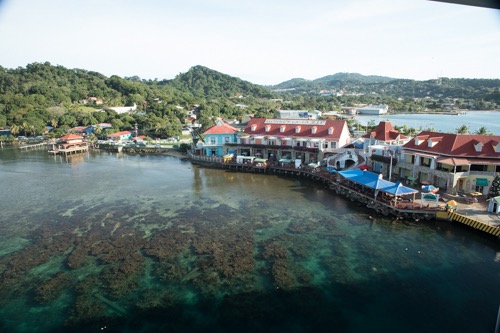
One thing we notice immediately when we looked out at our port was how clear the water was. We docked at Coxen Hole on Roatán Island. The Island is 48 miles long and 5 miles wide 40 miles off the coast of Honduras. The economy is driven by tourism and fishing. The reef is one of the best, and as a result, diving is world class near the island.
Honduras has been in the news lately because of the political situation. There was an election in November and the incumbent lost. He changed the constitution allowing him to stay in his position. He is refusing to leave office creating a crisis. The only evidence we saw of that on Roatán was the trash workers strike meant garbage was piled up around the collection sites.
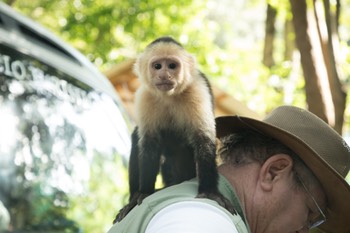
We took an “Island highlights” tour. The bus we were in was very narrow. It had 2 seats on each side and the aisle was miniscule. I had to walk down it sideways and even then was touching the seats with my diminutive derrière. There was one lady on the bus who could barely squeeze through the aisle. We were told the bus was made in Japan. The narrowness of the bus was important because the roads are narrow in spots. A big bus would not have been a good thing.
Our first stop was a small animal preserve. When we were getting off the bus, a monkey jumped on the bus and washed by the bus driver. After that space, he jumped out of the bus onto a man’s shoulder, much to the delight of the crowd who took lots of pictures of this monkey.
There was a cage of spider monkeys. They were not allow to run around during the day because they can be quite aggressive and can cause harm to humans. They are called spider monkeys because they o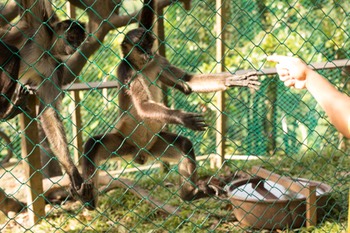 ten spread out with their arms and feet looking like spiders. You can see that with the feet of the one in the picture. At night, after the center closes, they let the monkeys out of their cages. We asked our guide why they come back. He told us they come back for the food. It occurred to me that a cruise ship is not much different. The passengers are "caged up" when we are at sea. When docked, we are set free and return because we get fed on board. There are other reasons to return of course, but …
ten spread out with their arms and feet looking like spiders. You can see that with the feet of the one in the picture. At night, after the center closes, they let the monkeys out of their cages. We asked our guide why they come back. He told us they come back for the food. It occurred to me that a cruise ship is not much different. The passengers are "caged up" when we are at sea. When docked, we are set free and return because we get fed on board. There are other reasons to return of course, but …
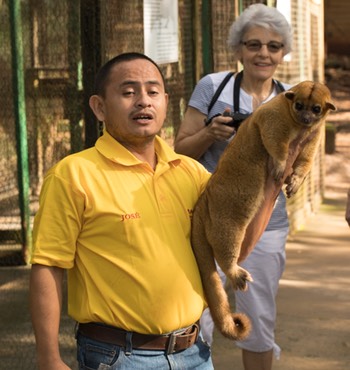
Our guide (Jose Marie) showed us a Kinkajou (or kinkajú).It is a nocturnal animal that is seldom seen during the day. It lives mostly in the trees and has a fully prehensile tail. Definitely a lovable animal.
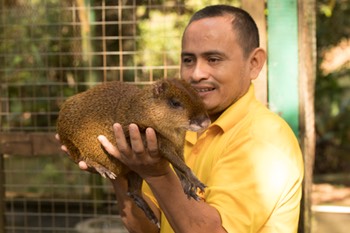
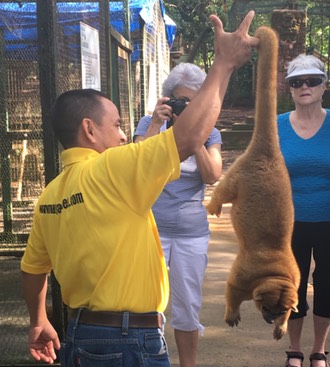
The Agouti is a rodent related to the guinea pig. They are good swimmers.
We saw some naive butterfly species that were gorgeously colored. A few pictures are below.
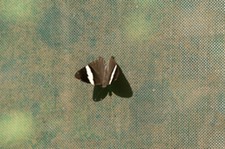
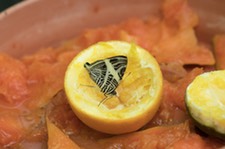
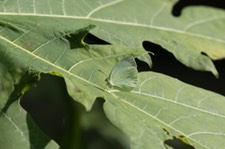
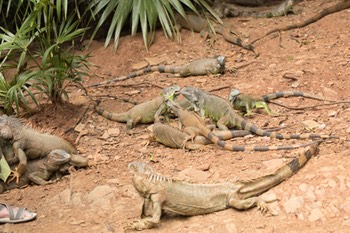

After a trip to a high point on the island to see a view of the reef, we went to an iguana preserve. You wouldn’t think that iguanas would need preserving, but apparently iguana eggs are used as medicine and are highly sought after. As a result, baby iguanas are eaten before they are born and the iguana is endangered, at least on the island. So, a private citizen fenced off his property and has turned into an iguana sanctuary. There were iguanas everywhere. Little ones and big ones and everything in between. Even though they look fierce, they are vegetarians and don’t bit people. They are fairly docile.
Because they are reptiles and therefore cold blooded, they need sunlight. In a forest, they need to get to the top of the trees. We saw the one below just chilling out in the tree. The iguana eating on the right was being fed by Caroline. To see the iguana better, I cropped her out.
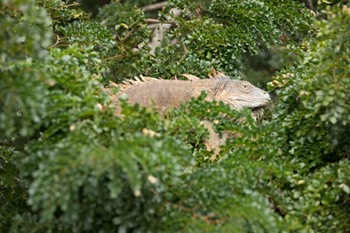
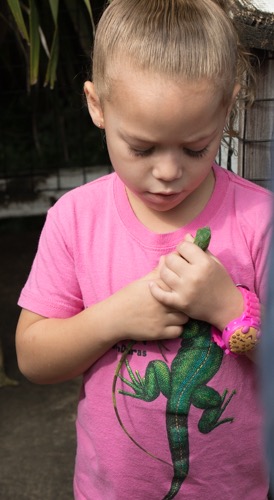
Our guide Jorge brought a young girl to the group and said she was our temporary tour guide. She told us her name was Erricka. She spelled it for us as I am sure she will need to do a lot because of the unusual selling. She is holding a baby iguana and told us all about it. Someone asked her if it had a name. Se responded, “Of course. It’s name is Melody.” Seems like a perfectly good name for an iguana to me. She gave us other details about iguanas and was quite articulate and knowledgable. She told us her grandfather was the owner of the sanctuary and she obviously was there a lot. She was one precocious young lady.
An iguana was crawling up the bannister toward the deck we were standing on. A woman brought up a baby and she reached out and touched the iguana. Later, I figure out the baby was Erricka's sister.
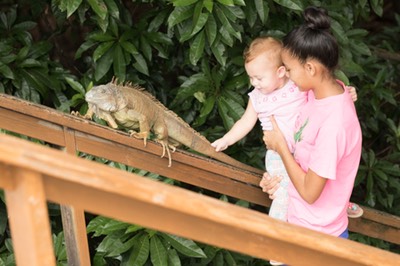
We did some shopping on the dock and then ate lunch with our good friends Dick and Barbara. Chuck had a Red Snapper which was quite good. I saw a local eat one there was not much left but a few bones. In my case, there was more left <grin>.

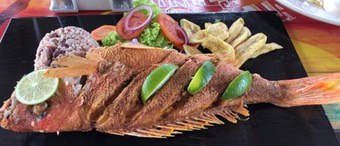
It was a good day in Honduras.
